Opening the debate on women preaching Bible verses, this exploration challenges traditional norms and beckons a closer look at evolving spiritual roles.
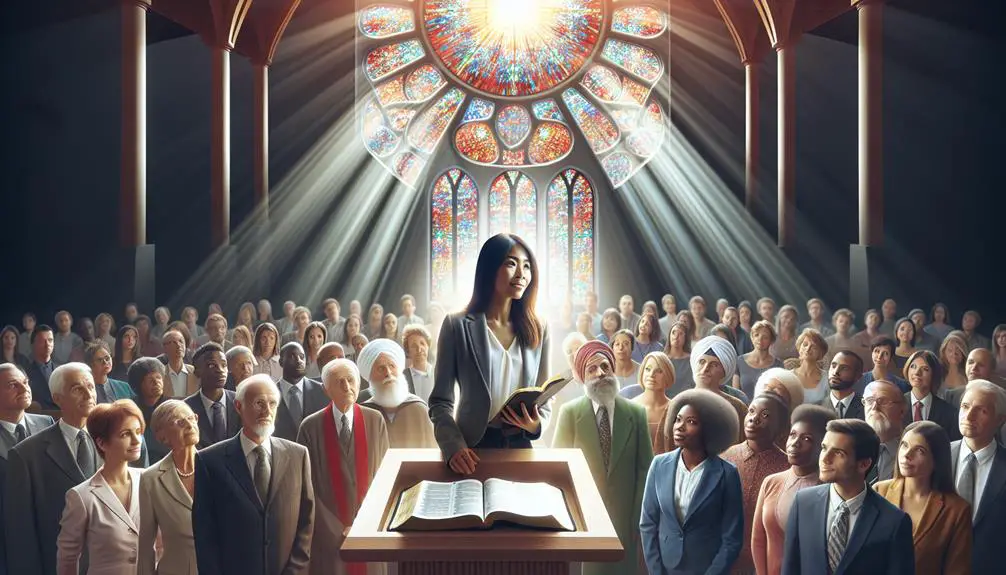
Can a Woman Preach Bible Verses
Just as Deborah rose in ancient times to lead and prophesy, you too might wonder about the contemporary role of women in preaching Bible verses.
The landscape of religious discourse is ever-evolving, yet the question remains surrounded by biblical foundations, historical contexts, and cultural nuances.
You're standing at the crossroads of theological debate and gender equality, where scriptural interpretations clash and converge.
What lies ahead is a journey through modern viewpoints and global practices, inviting you to explore how the future could reshape our understanding of spiritual leadership.
Are we on the brink of a new era?
Key Takeaways
- Scriptural interpretations support women preaching, transcending traditional gender roles.
- Historical and cultural contexts influence attitudes towards women preachers globally.
- Technological advancements and social movements advocate for inclusivity in religious leadership.
- Ongoing debates and theological studies continue to shape the role of women in preaching.
Biblical Foundations

To understand whether a woman can preach Bible verses, it's essential to examine the scriptural texts that form the basis of this discussion. The Bible, revered for its divine commandments and prophetic roles, offers insight into this complex question. You'll find that the scriptures don't uniformly restrict or endorse women's roles in preaching, leading to diverse interpretations within the Christian community.
Delving deeper, the role of women as conveyors of God's word is evident in both the Old and New Testaments. Women in prophetic roles, such as Deborah and Huldah, were instrumental in delivering divine messages to the Israelites, showcasing that gender didn't limit one's ability to serve as a mouthpiece for God. In the New Testament, figures like Priscilla worked alongside Paul, teaching and spreading the gospel, suggesting an active participation in the early Christian ministry.
Therefore, when you scrutinize these scriptural examples, it becomes apparent that the capacity to preach and share the gospel transcends gender. The focus within the Bible on spiritual gifts and calling over gender-specific roles invites a broader interpretation that doesn't outright limit preaching to men.
Historical Perspectives
You must consider the roles women held in the early church and how scriptural interpretations have evolved over time to fully grasp the historical context of women preaching.
These roles and interpretations provide insight into the shifting dynamics within Christian communities.
Understanding this historical perspective allows you to analyze the current discourse on the subject with greater depth and nuance.
Early Church Roles
Within the context of early Christianity, the roles assumed by individuals in church activities notably evolved, reflecting broader societal changes and theological debates. Apostolic succession, a key principle, underscored the continuity of ecclesiastical authority from the apostles through successive generations. This concept deeply influenced who could perform liturgical functions, such as preaching, within the community.
As the church's structure became more defined, roles within liturgical settings were more strictly delineated, often mirroring societal norms of the time. This evolution wasn't merely administrative but intertwined with theological interpretations, affecting how roles were perceived and enacted. The early church's approach to roles, including those of women, reveals a complex interplay between tradition, scriptural interpretation, and the practicalities of community leadership.
Scriptural Interpretations
Having explored the evolving roles within the early Christian community, it's crucial to examine the historical perspectives on scriptural interpretations, particularly regarding the contentious issue of women preaching.
Throughout history, the interpretation of scripture relating to gender roles in preaching has varied significantly. Early texts reveal that women, serving as prophetic voices, were integral in spreading the Christian message. This acknowledgment of women's contributions contrasts with later interpretations that restricted their roles.
Scholars argue that these changes reflect broader societal shifts rather than theological foundations. Analyzing these interpretations shows a dynamic dialogue within Christianity about authority, gender, and the divine calling.
It's evident that understanding the historical context of these scriptural interpretations is key to grasping the complex nature of gender roles in religious leadership.
Cultural Considerations
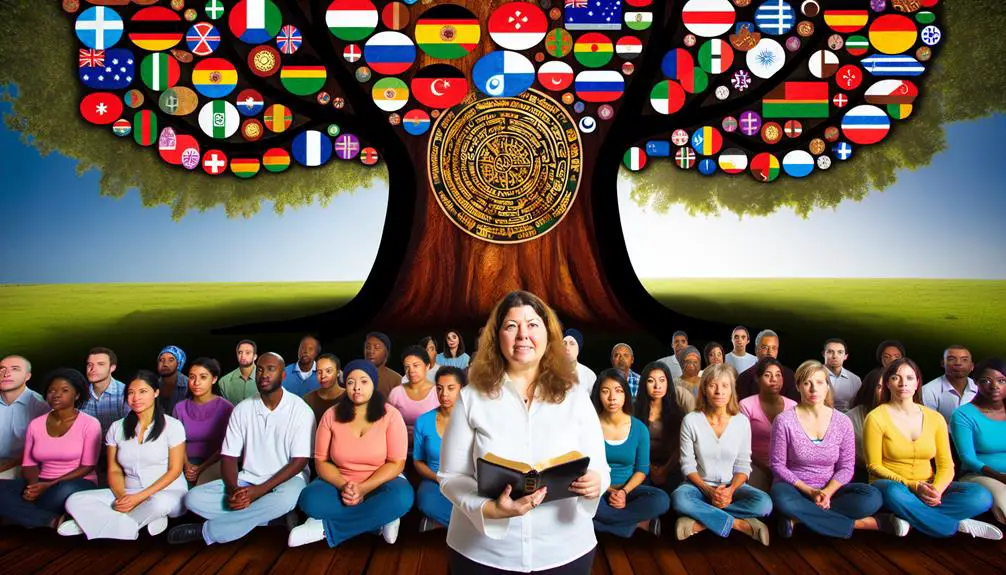
You'll find that historical norms around women preaching have evolved significantly, reflecting broader shifts in societal attitudes.
Globally, perspectives on this issue vary widely, influenced by cultural context and local religious practices.
Moreover, interpretations of religious texts differ, further complicating the discourse on women's roles in preaching Bible verses.
Historical Norms Shift
Throughout history, cultural norms regarding women preaching Bible verses have evolved significantly, reflecting broader societal shifts in gender roles and religious practices. This transformation can be attributed to several key factors:
- Reinterpretation of Religious Texts: Scholars and theologians have re-examined scriptures, leading to new understandings that support women's roles in spiritual leadership.
- Advancements in Gender Equality: As societal norms have progressively embraced gender equality, so too have religious communities gradually recognized the capabilities and rights of women to preach.
- Influence of Social Movements: Feminist movements and advocacy for women's rights have challenged traditional restrictions, paving the way for women to assume preaching roles.
These shifts reflect a dynamic interplay between evolving societal norms and reinterpretations of religious tenets, underscoring the complex relationship between culture, gender roles, and religious practice.
Global Perspectives Vary
Across the globe, attitudes toward women preaching Bible verses vary widely, reflecting diverse cultural and religious landscapes. In some regions, the legal status of women in religious roles is clear-cut, allowing or disallowing them to preach based on written laws or policies. These legal frameworks often mirror societal roles, where women's participation in religious leadership can either be a norm or a contentious issue.
You'll find that in cultures with more egalitarian views, women's roles in preaching are more accepted and encouraged. Conversely, in societies where traditional gender roles are deeply entrenched, there's significant resistance to women preachers. This variance underscores the complex interplay between legal, societal, and cultural factors in shaping attitudes toward women preaching Bible verses.
Religious Interpretations Differ
While legal frameworks and societal norms significantly influence attitudes toward women preaching Bible verses, religious interpretations play a critical role in shaping these perspectives across different cultures.
You'll find that:
- Gender roles are often deeply entrenched in religious teachings, varying significantly from one faith to another. This diversity leads to differing views on women's participation in spiritual leadership.
- Spiritual leadership itself is interpreted through a cultural lens, with some traditions embracing female leaders, while others remain more conservative.
- The context in which religious texts are understood can either restrict or empower women in preaching roles, depending on the prevailing cultural attitudes towards gender equality.
These nuances underscore the complexity of advocating for or against women in preaching roles, highlighting the importance of cultural sensitivity and scholarly analysis in such discussions.
Theological Arguments
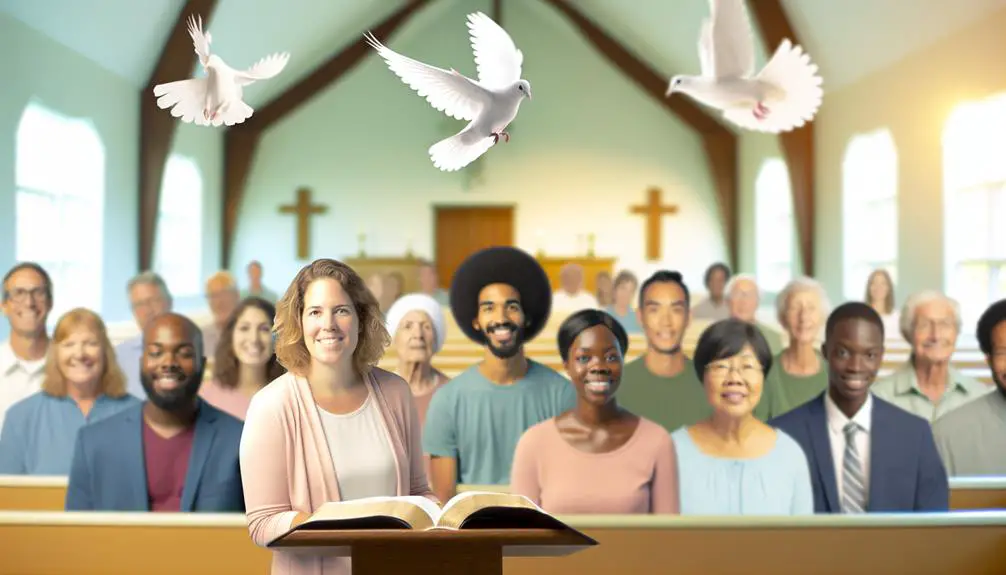
The debate over whether a woman can preach Bible verses is deeply rooted in theological arguments, reflecting diverse interpretations of scripture. Within these discussions, concerns about gender bias often emerge, challenging traditional views and prompting a re-examination of how preaching styles, irrespective of the preacher's gender, influence the conveyance of biblical truths.
Historically, some argue that specific scriptural texts suggest a clear directive against women preaching, citing passages such as 1 Timothy 2:12. However, this perspective is increasingly scrutinized for potentially overlooking the cultural and historical context in which these texts were written. Scholars suggest that rather than imposing a universal prohibition, these passages addressed specific issues relevant to the early Christian communities.
Moreover, the analysis extends beyond merely identifying instances of apparent gender bias. It involves a thorough exploration of how preaching styles, whether assertive or reflective, analytical or narrative, can be effectively embraced by both men and women to enrich the spiritual life of a congregation. This approach acknowledges the complexity of theological arguments and encourages a more inclusive understanding of who's deemed capable of preaching Bible verses.
Gender Equality
You may find that biblical perspectives on equality and modern church interpretations offer rich grounds for understanding gender roles in religious contexts.
By examining these points, you'll see how interpretations of scripture have evolved, reflecting broader societal shifts towards gender equality.
This analysis allows for a nuanced discussion on whether women can preach Bible verses, respecting both traditional and contemporary viewpoints.
Biblical Perspectives on Equality
Exploring biblical perspectives on gender equality reveals a complex tapestry of interpretations and teachings that have influenced views on women's roles, including preaching, within various religious traditions. This discussion navigates between gender roles and social justice, providing insights into how scriptural texts have been understood and applied over centuries.
- Genesis Creation Narratives: These passages suggest a foundational equality, portraying men and women created in God's image.
- Prophetic Voices and Leaders: Examples include Deborah's leadership and the prophesying daughters of Philip, challenging traditional gender roles.
- Pauline Epistles: While often cited to restrict women's roles, a closer examination reveals nuanced teachings that advocate for mutual respect and partnership in the faith community.
This analysis underscores the importance of context and interpretation in understanding the Bible's stance on gender equality.
Modern Church Interpretations
Many modern churches have diverged in their interpretations of gender equality, reflecting a spectrum of beliefs on women's roles within religious communities. Ecclesiastical policies, often rooted in historical tradition, are being re-evaluated to foster inclusivity.
You'll find that some denominations have actively amended their doctrines to support women in pastoral roles, integrating leadership training programs specifically designed for aspiring female clergy. This shift not only challenges traditional norms but also enriches the spiritual leadership landscape.
However, it's essential to recognize that not all congregations align with this progressive stance. The variance in interpretations underscores a broader dialogue within Christianity about the intersection of faith, gender equality, and the evolving role of women in religious settings.
Church Traditions
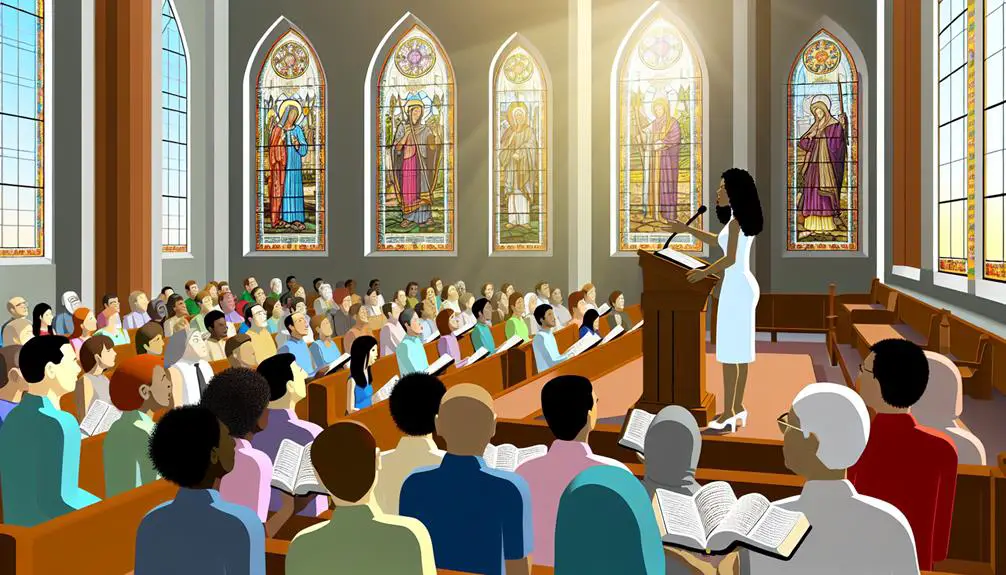
Within the context of church traditions, attitudes toward women preaching Bible verses vary significantly across different denominations and historical periods. You'll find that these traditions often manifest in two key areas: liturgical attire and service formats. These elements serve not just as expressions of faith but also as markers of roles within religious services.
- Liturgical Attire:
In many traditions, specific garments symbolize authority and roles within the church. The question of whether women can wear such attire often reflects broader attitudes toward their participation in preaching.
- Service Formats:
The structure of worship services, which can range from highly formalized liturgies to more fluid and informal gatherings, also influences the opportunities for women to preach. In some settings, rigid formats may restrict preaching roles to ordained clergy, while more flexible formats might offer broader opportunities.
- Historical Precedents:
Historical practices within denominations provide a backdrop against which current attitudes toward women preachers are shaped. Some traditions have centuries-old norms that either restrict or encourage women's roles in preaching, affecting contemporary discussions.
Analyzing these aspects within church traditions offers valuable insights into the complex landscape of women preaching Bible verses. It's clear that traditions aren't monolithic, and shifts in both liturgical attire and service formats indicate evolving attitudes toward women's roles in the church.
Scriptural Interpretations
Turning our attention to scriptural interpretations, it's crucial to examine how various biblical passages influence perspectives on women preaching. The debate often centers on texts perceived to prescribe gender roles within religious settings. You're navigating a complex landscape where exegetical methods play a pivotal role in understanding these passages.
Exegetical methods involve critical analysis and interpretation of biblical texts. By applying these techniques, you delve into the historical context, literary forms, and intended audience of scripture. This approach allows for a nuanced understanding of passages that are often cited in discussions about gender roles in preaching. For instance, interpretations of Paul's epistles, which some argue limit women's roles in church settings, vary significantly depending on the exegetical approach.
Furthermore, it's essential to recognize that scriptural interpretations aren't static. They evolve as scholars and theologians engage with the text from new perspectives, informed by ongoing theological, cultural, and social developments. This dynamic nature of interpretation challenges you to consider how traditional understandings of gender roles in preaching might be re-evaluated in light of comprehensive exegetical study.
Modern Viewpoints
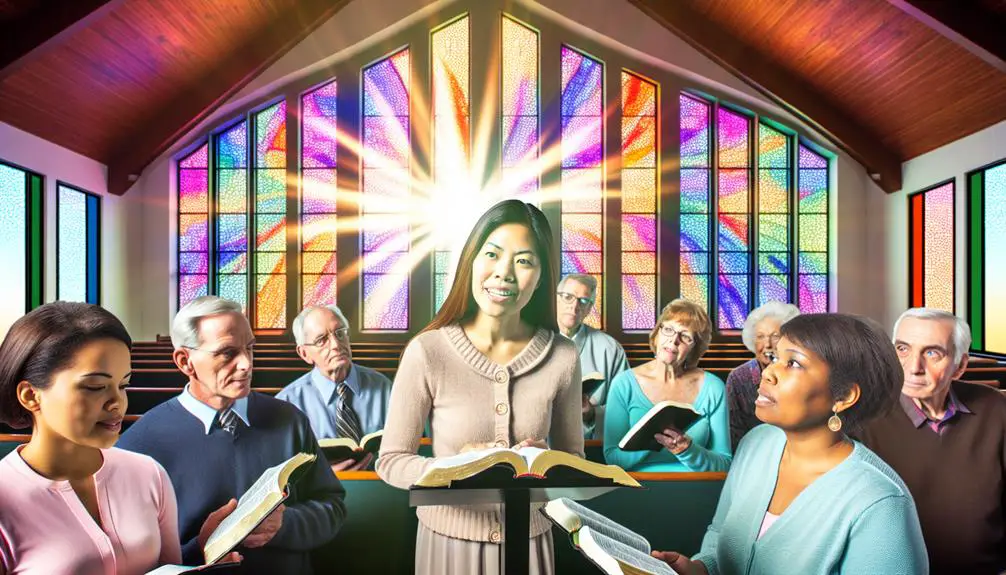
Contemporary perspectives on women's roles in preaching reflect a significant shift, as scholars and theologians increasingly challenge traditional interpretations of scripture. You're witnessing a pivotal moment in religious discourse where the analysis of gender roles and preaching styles takes center stage. This transformation is marked by several key developments:
- Inclusivity in Leadership: There's a growing acceptance of women pastors and preachers, embracing diverse voices in spiritual leadership.
- Reinterpretation of Scriptures: Critical examination of biblical texts now often includes a cultural and historical context, challenging patriarchal readings that have historically limited women's roles in preaching.
- Adaptation of Preaching Styles: The recognition that effective preaching isn't tied to gender has led to a greater appreciation of varied preaching styles, irrespective of the preacher's sex.
This evolution in thinking doesn't just alter the landscape of ecclesiastical leadership; it challenges longstanding societal norms about gender roles within and beyond religious communities. As you navigate these changes, you're encouraged to engage with these debates critically and respectfully, recognizing the profound impact they've on individuals' spiritual lives and the broader religious community.
Global Practices
Across the globe, practices surrounding women's roles in preaching vary significantly, reflecting a complex interplay of cultural, historical, and theological factors. These regional differences can be stark, shaped by both the acceptance and resistance within religious communities. Language barriers further complicate the dissemination and interpretation of theological teachings on this matter, leading to diverse practices even within the same denominations.
Region |
Attitude Towards Women Preachers |
Influencing Factors |
|---|---|---|
North America |
Generally accepting |
Progressive theology and societal norms |
Middle East |
More restrictive |
Traditional interpretations of religious texts |
Sub-Saharan Africa |
Mixed, varies by community |
Cultural traditions and colonial history |
You're navigating a landscape where inclusivity and tradition often clash. In North America, for example, there's a trend towards gender equality in religious leadership, influenced by broader societal shifts toward inclusivity. Conversely, in the Middle East, traditional interpretations of religious texts tend to limit women's roles in preaching. Sub-Saharan Africa presents a tapestry of practices, where historical and cultural layers significantly influence attitudes towards women preachers. Understanding these nuances is crucial for a comprehensive grasp of global practices in religious preaching by women.
Future Directions
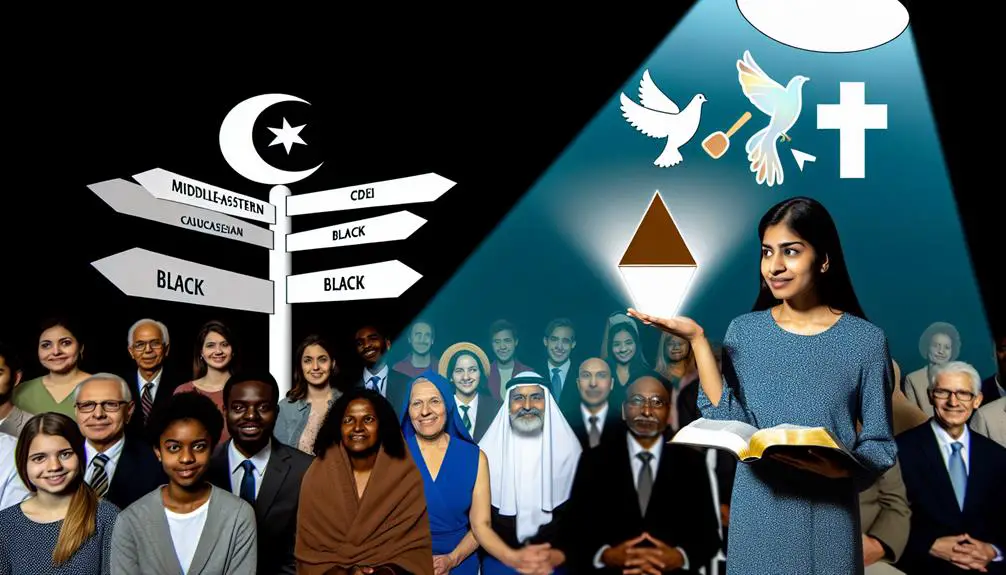
Reflecting on the diverse global practices, it's crucial to consider how evolving societal norms and theological interpretations will shape the future of women's roles in preaching. As you move forward, understanding the future directions in this area requires an analytical and respectful approach, focusing on the impact of technology, leadership training, and the shifting landscape of religious discourse.
- Technology Impact: The digital age will continue to democratize access to religious platforms, enabling women to preach and lead from virtual pulpits. This shift not only broadens the audience but also challenges traditional norms about physical spaces being the primary venues for preaching.
- Leadership Training: Enhanced leadership training programs, specifically tailored for women, will play a pivotal role. These programs won't only equip women with theological knowledge but also with the skills needed to navigate and lead within religious communities that are increasingly diverse and inclusive.
- Shifting Interpretations: The ongoing scholarly and theological debate will further influence the acceptance of women preachers. As interpretations evolve, a more inclusive understanding of religious texts could pave the way for increased roles for women in preaching.
As you consider these future directions, it's evident that the landscape for women in preaching is poised for significant transformation, driven by technological advancements, targeted leadership training, and evolving theological interpretations.
Frequently Asked Questions
How Do Personal Testimonies From Women Who Have Preached Impact the Acceptance of Women Preachers in Various Denominations?
Your understanding of how personal testimonies impact the acceptance of women preachers in different denominations requires examining cultural biases and leadership styles.
These testimonies can challenge long-standing prejudices and showcase diverse leadership qualities, encouraging more inclusive attitudes. They serve as powerful narratives that can reshape perceptions, illustrating that leadership efficacy transcends gender.
Analyzing these stories offers insights into overcoming barriers and fostering greater acceptance across various religious communities.
Are There Specific Educational or Theological Qualifications That Are More Commonly Required for Women Compared to Men Who Wish to Preach?
When exploring the qualifications for preaching, you'll find that gender bias and ordination practices can lead to different standards for women compared to men. Typically, women may face more stringent educational or theological requirements.
This discrepancy underscores the need for a critical examination of how gender influences these expectations. Understanding these dynamics is crucial for addressing inequalities and fostering a more inclusive environment within religious communities.
How Do Psychological Studies on Congregation's Reception to Women Preachers Compare to Those of Men?
You're diving into how folks react to women versus men preachers, right?
Picture this: studies use gender bias as a seasoning, sprinkling it over findings like it's some secret sauce. They've found that emotional intelligence plays a huge role.
When comparing, it turns out congregations might just wear gender-tinted glasses, affecting reception more than you'd think.
It's a scholarly dance around analyzing biases, minus the satirical jest, yet respecting the depth of this inquiry.
What Role Do Social Media and Modern Technology Play in Expanding or Limiting the Opportunities for Women to Preach Bible Verses?
Social media and modern technology have significantly impacted the spread of religious messages. You'll find that digital evangelism opens vast avenues for sharing Bible verses, expanding opportunities beyond traditional pulpits.
However, you must also consider technological discrimination, which might limit women's visibility and reach in these digital spaces. It's crucial to analyze how these platforms can both empower and restrict the dissemination of religious teachings by women, shaping the landscape of digital ministry.
How Does the Financial Compensation for Women Who Preach in Religious Settings Compare to Their Male Counterparts?
Diving into the financial realm, you'll find the gender wage gap's shadow looming over the earnings of women who preach. Despite their profound contributions, these women often grapple with a pay disparity compared to their male counterparts.
Negotiation strategies could be a beacon of hope, empowering them to bridge this gap. Analyzing this through a scholarly lens, it's crucial to respect and address these financial inequalities to foster a more equitable environment.
Conclusion
In conclusion, the debate over whether a woman can preach Bible verses is multifaceted, involving historical, cultural, and theological considerations. Interestingly, a study found that approximately 20% of clergy in the United States are women, illustrating a significant, though still minority, representation.
This statistic underscores the ongoing evolution of gender roles within religious contexts. Analyzing scriptural interpretations and modern viewpoints reveals a spectrum of beliefs about gender equality in religious leadership, suggesting a dynamic future for religious discourse and practice.


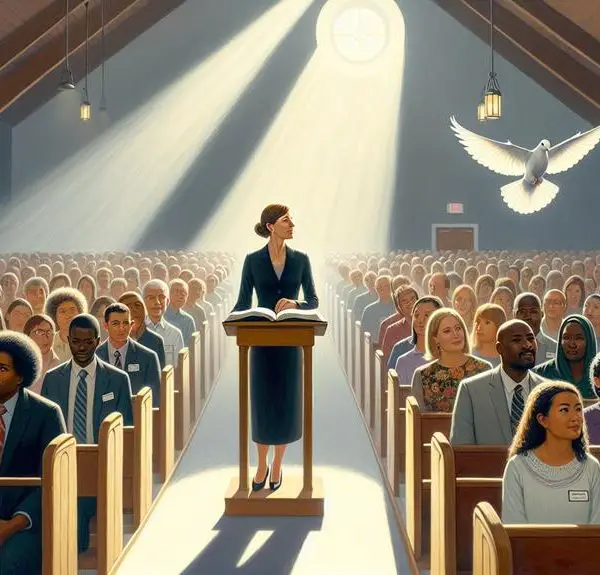
Sign up